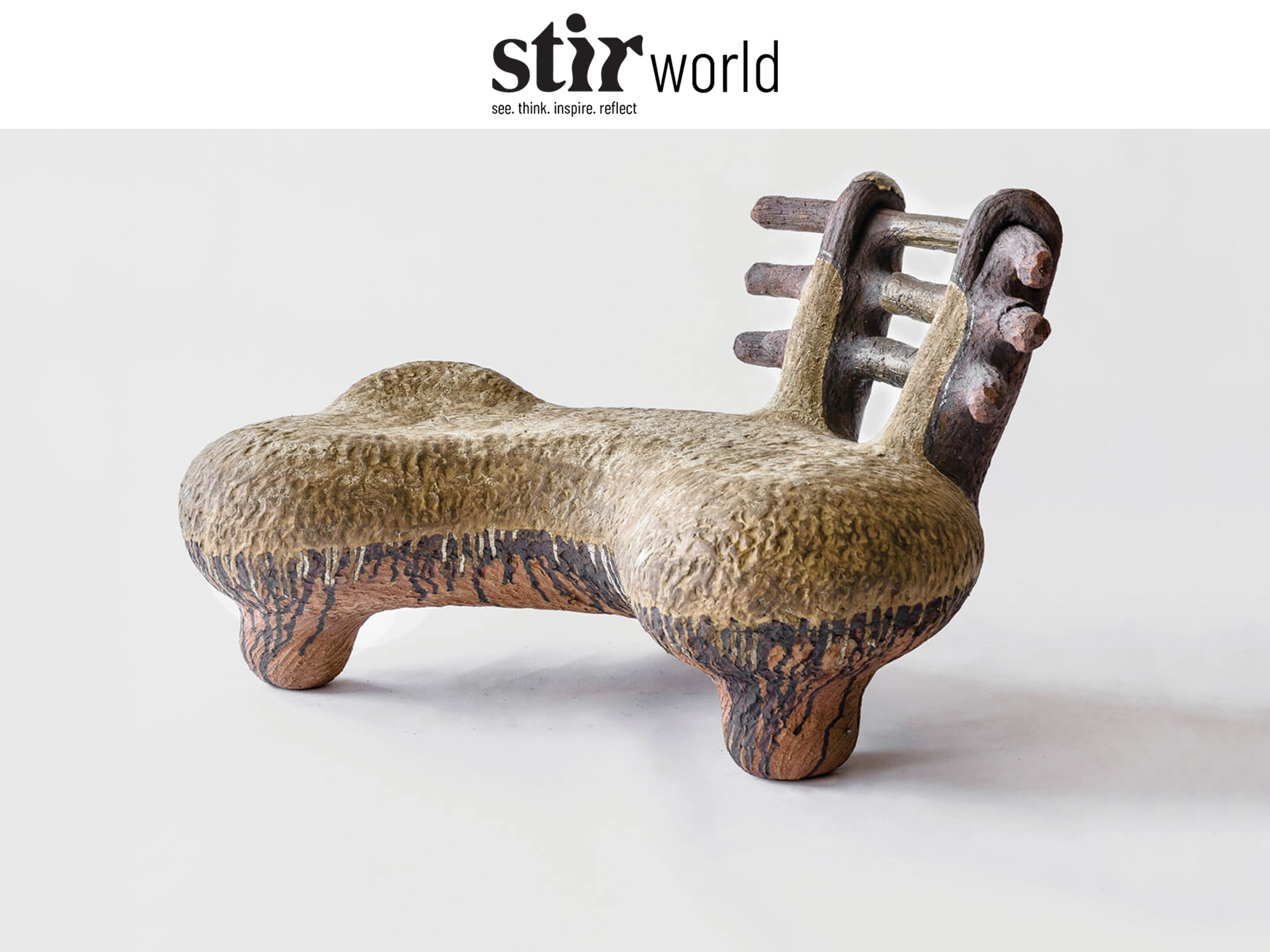By Dilpreet Bhullar
To give a creative shape to the intricately tied ideas of mother earth and home is the art practice of the ceramic artist, Andile Dyalvane. In his latest exhibition, iThongo, at Friedman Benda in New York, the Cape Town-based artist Dyalvane pays tribute to his ancestral roots by taking the entire collection of sculptural ceramic seating – part of the exhibition – to his homestead in Ngobozana, Eastern Cape. The term iThongo from the language Xhosa can be translated as “ancestral dreamscape”, so the travel of the exhibition to Ngobozana was a way to give tribute to his home and let the family and community members have the opportunity to see the collection before it was displayed at the Southern Guild, South Africa, last November, and now at Friedman Benda.
In the current times, when the world is still grappling with the pandemic, Dyalvane’s art practice lays bare the pertinent need to have a healthy ecosystem. Talking about the same in the context of the exhibition, he affirms, “I believe a healthy community is where a healthy ecosystem begins. We have forgotten to be deeply grateful to be here on this globe Mother Earth, with each other. An ecosystem needs collective planning, collective grounding and to a large degree this is the work of meeting each other in various dimensions – our ancestral dreamscapes iThongo – for us to create together, harmoniously once more. For me, it is a continuous work toward a resolution, which I believe is to be a good change in us”.
Taking inspiration from the circular ceremonial gatherings of the Xhosa community, the circular shaped sculptures represent the eternal and unbroken flow of energy. Moreover, the sitters with round bases are based on “single pictogram or glyph from a series of close to two hundred symbols which the artist has created to give meaning to keywords in Xhosa life” including: entshonalanga (sunset), igubu (drum), umalusi (herdsman) and izilo (totem animals). In order to preserve Xhosa’s cultural knowledge systems, Dyalvane created the symbols as calligraphic ink drawing. Interestingly, it was during the first exhibition, Camagu, in 2016 at Friedman Benda that Dyalvane first developed the series of symbolism. The encrypted language is part of the form and skin of each of the pieces at the display, which becomes an extension of the natural world and universal human concepts.
Dyalvane hand-coils grogged terracotta clay to make circular shaped sculptural stools, chairs and benches. For the artist, “There is a grip factor between particles that make this clay efficient for large sculptural works. It has been a gift to have fully practiced a hand within and through clay”. The series of seating objects are low in height, giving an opportunity to be in close proximity to the mother earth. During his impressionist years, Dyalvane was drawn to the activities of farming and cattle rearing which inevitably brought him close to the land values synonymous with Xhosa culture. To internalise the ancient wisdom knowledge into his vocation, Dyalvane has made umhlaba or clay his medium to create a series of sculptures. The sitter Ikhaya or home epitomises the essence sense of belonging i.e. Dyalvane’s birthplace Ngobozana village.
Giving an explicit meaning of home, belonging, and the notion of collective memory, Dyalvane carefully walks us through their creative presence in his works, “Talking to family back home jogs memories of certain practices or traditions we shared and may still share as a community. My own memories, thoughts expressed and current generational interpretations of what certain stories, words and practices mean, help in seeing clearly creative possibilities within them. This brings us to thread a fresh meaning into our understanding through collaboration with practitioners of sound, script and critical thought. As a collective voice emerges, our dreamscapes offer and lead us to platforms where we can meet both physically and virtually. I enjoy connections grown into restorative celebrations of who we truly are and I deeply trust that it will be felt in structural forms, spirit forms and messages realised”.
Epitomising similar thoughts are the two of his sculptures: Impepho and Ubuhlanti. Healing as an integral to the ecosystem of Xhosa community calls for collective cleansing of the humans and not directed to a single person. To highlight the same is the act of burning Impepho that aids the process of decluttering the mental space of thought. In an effort to draw a balance between mind, body and soul, this ritual has indeed brought focus onto the creative journey of the artist.
Kraal or Ubuhlanti is another important part of the Xhosa tradition that espouses the “ancestral transcendent energy of the home”. A popular sight at the rural Eastern Cape is the first place of arrival to announce the presence of the visitor, and offer due respect to the ancestors of the place by the act of removing the shoes to have direct contact with the soil.
Dyalvane emphasises, “We are not separate from the dreams of our ancestors. Collectively moving together in support of the good in each of us. We should root this as the best health for our hearts-togetherness, in communion with each other, sharing in gratitude for this life as it flows”. Bringing the elements of togetherness to the fore is the sculpture-cum-sitter Umnga or Acacia tree: evoked out of personal memories of the artist. The father and aunt of Dyalvane would narrate the family anecdotes of their grandfather to the artist, who would often sit under the medical acacia tree to share with them a variety of stories. The exchange of chemical communication within the tree, a symbol of place and time for the artist, allows the surrounding acacia tree to know the perils of animals nearby.
Indeed, Dyalvane’s exhibition iThongo comes at a crucial time to underscore the importance of finding a collective voice against the tide of the lopsided ecosystem as a way to restore ecological harmony.










